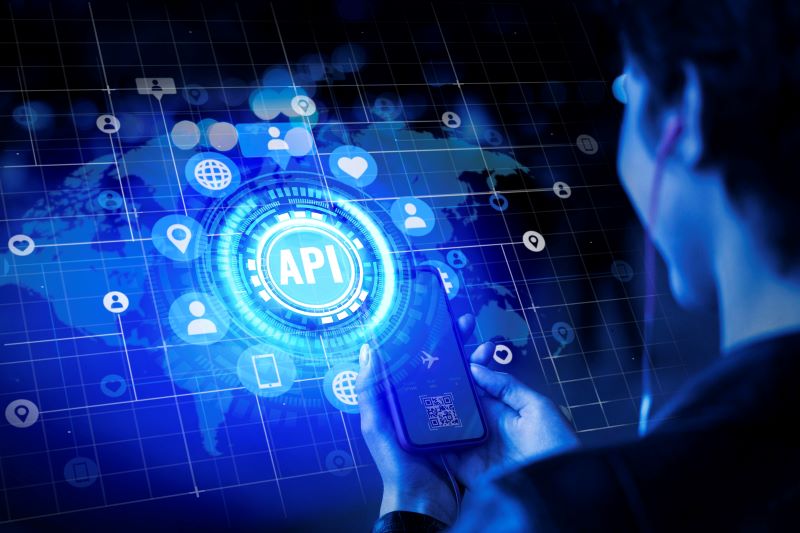Web Scraping Using API in Python
Web scraping allows you to capture the data you need when you need it. This could be to monitor market conditions and trends or to conduct research for a project. Web scraping automates the process of capturing data and using it for decision-making. The problem is that data is incredibly critical and can be highly effective – it just needs to be efficient as well. Web scraping using an API in Python is the solution.
Table of Contents
With web scraping API for Python, you can get more done faster and skip a great deal of the complex coding you need to handle on a typical basis. APIs simplify and streamline the scraping process. This lets developers move through the process faster. Our web scraping API at Scraping Robot is your simplest starting point. Before you dive into that, though, consider a few steps on how to integrate APIs into your web scraping processes.
What Is Web Scraping Using API in Python?

Web scraping is the process of extracting specific data that is helpful to you from other websites through an automated process. Instead of having to visit the page yourself, a web scraper you design works for you. This process is effective, but the use of web scraping API in Python can amplify it.
Web scraping can be complex, as many websites are designed to stop you from capturing that data. This could be for privacy reasons, but it is also often due to the website owner wanting to reduce the impact on their resources. The more activities like this on their network, the slower the server can act. To slow you down, they often include tools like CAPTCHAs, IP blocks, and the use of dynamic content, which often makes it harder to have a simple web scraping tool setup.
A web scraping API in Python can resolve that problem for you. It is a reliable way to get more of the information you need, even overcoming the challenges that target websites create. You can leverage an API to automate the process for you.
How to Integrate API Web Scraping Python Solutions

When it comes to engaging in a web scraping API in Python, there are several steps you need to take. It is best to do this using Python’s numerous libraries. They can help you manage the entire process with ease. Python is a flexible solution for static and dynamic pages, but to make the process more efficient, you will likely use several of the following Python libraries. Consider a few of our recommendations for Python web scraping using API and libraries.
Requests: One of the most effective tools for parsing HTML is Requests. It works alongside another of the libraries you may be using, BeautifulSoup. When working together, these two tools can make parsing HTML quite simplistic. It is also more intuitive, which means less guesswork for you. Requests will easily integrate with your API to fetch structured data directly. This allows you to bypass traditional scraping to do so.
Requests are noted for several things, including providing a human-readable API, supporting authentication and sessions, and simplifying HTTP requests. Download web pages and interact with web APIs with ease using Requests.
HTTPX: Another similar solution is HTTPX. There are times when requests take longer, and you need to move through the process more efficiently. In those situations, using HTTPX can be an excellent resource. It is a Python HTTP client designed for web scraping and can enable you to use more advanced tools.
Scrapy: When it comes to API web scraping, the Python library Scrapy can also be helpful. It is commonly beneficial in situations where APIs are unavailable – in other words, there is no simple way to interact with the website, and you need more help. Scrapy is a powerful tool that is very popular for its ability to pull data from websites. It is a full toolset for the entire process, which also helps with large-scale scraping projects. It can handle requests, responses, and extraction and provides built-in support for cookies. We also often recommend it when you are scraping more complex, structured websites.
Selenium: Another option when you are facing limitations because an API is not available is Selenium. It is an important tool because it allows you to get around one of the fastest-growing risks for today’s web scraping process: dynamic websites. These websites, specifically, are more challenging to scrape, even with a Python API web scraping setup. Selenium does well because it is designed to work with pages that have JavaScript content on them. It can fill out forms and interact with questions during the process.
Both Selenium and Scrapy are beneficial because they can help you extract data from a website and mimic API-like functionality. As you work to build your data, know that web scraping API Python solutions are numerous, and there is very little you cannot do.
Python API Web Scraping with Our API

If you are ready to get started and want some help along the way, use Scraping Robot’s API. It is very simple to use and can be set up within minutes. You can then use it to streamline your scraping projects and wrap them up more efficiently overall.
If you have not done so yet, create an account on your site. You will then be able to get API credentials. The API key is on the dashboard. This will help you authenticate requests and allow you to interact with the API in a secure fashion.
Once you do this, you will need to download the libraries you plan to use. For example, most projects will benefit from the use of Requests. You can go to your command line and download it using:
Pip install requests
This then lets you send GET and POST requests to the API. It is a very simplistic way to start capturing valuable data.
How to Use Python API for Web Scraping Success

Let’s assume you have the web scraping and API fundamentals in Python down. If you need a bit more help, read “A Guide to Web Crawling with Python” and How to use our HTML API for general scraping using Python. We have a few additional elements to think about before you move forward with this process.
Protect yourself with proxies. We strongly recommend the use of proxies to help you avoid any type of block you may encounter. Even with API web scraping in Python, blocks can happen, and your private information, such as your IP address, can be exposed. Many times, websites will block an IP address that they believe is engaging in web scraping – that is because of the demand it can place on their network. However, if you are using rotating proxies, they do not see the same IP address every time, and that means it becomes possible for you to always look like a new user. It is critical to know how to use a web scraping proxy throughout this process.
Scheduling is a common question. With API web scraping Python using our API, you can set up the type of schedule that fits your project needs and goals. The process, again, is very simple to use and can provide you with the tools you need to scrape tasks quickly. We encourage you to set up scheduling based on when you want it to run and how often (daily or weekly are the most common). This way, you are able to monitor the data you need with ease. This is one of the best automation features that can speed up your web scraping process and give you more of the information you need now.
Overcoming errors. It is not always simple to avoid errors, and in fact, there are likely to be numerous situations in which you have to handle errors in an efficient manner to keep your project on task. We encourage you to use our Python API web scraping tool to minimize these risks. It can include automatic error handling and then will provide retries thanks to the onboard retry logic provided. This ensures that your system is operating efficiently.
Get Started with API Web Scraping Python Now

Web scraping API Python can be one of the most effective setups for data acquisition. When you use the libraries we discussed here, along with the Scraping Robot API, you can easily navigate all of your needs quickly. This creates an efficient and scalable solution that can tackle even the most complex scraping needs. Note that all of our recommended steps abide by ethical and legal standards.
Learn more about Scraping Robot API now to get the process started.
The information contained within this article, including information posted by official staff, guest-submitted material, message board postings, or other third-party material is presented solely for the purposes of education and furtherance of the knowledge of the reader. All trademarks used in this publication are hereby acknowledged as the property of their respective owners.
q
